Economy

Employment by Industry in February
Written by Peter Wright
March 8, 2020
February’s employment report showed a turnaround in manufacturing, while construction continued to boom.
The net increase in employed persons was 273,000 in February, the same as an upwardly revised result for January. In February, 42,000 jobs were created in construction and 15,000 jobs in manufacturing. The private sector gained 228,000 jobs in February and government gained 45,000 positions. Table 1 breaks total employment down into service and goods-producing industries and then into private and government employees. Most of the goods-producing employees work in manufacturing and construction and the components of these two sectors of most relevance to steel people are broken out in Table 1.
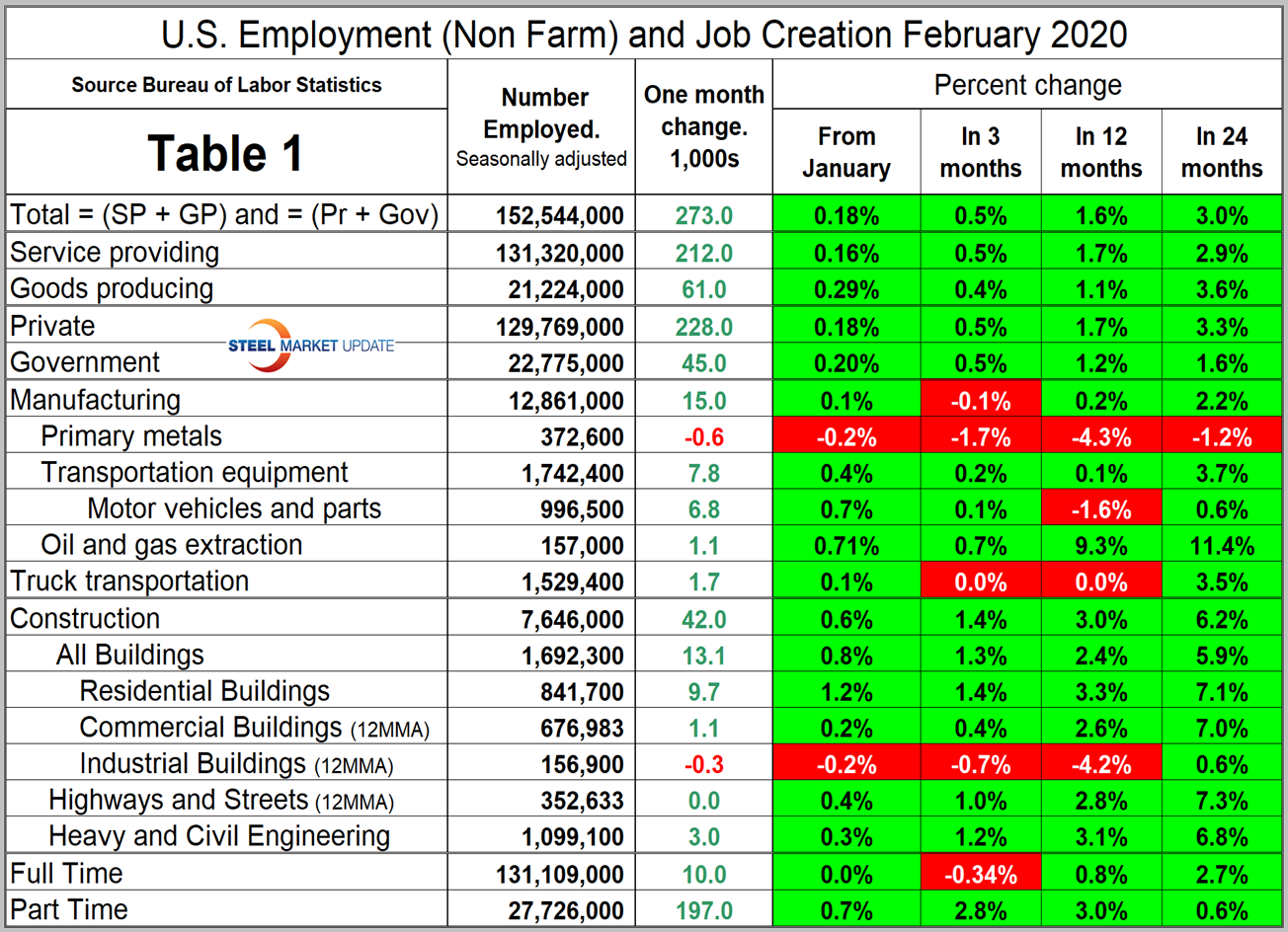
In February, the number employed by the federal government increased by 8,000. State governments added 18,000 and the local level increased by 19,000. Since February 2010, the low point of total nonfarm payrolls, private employers have added 22,530,000 jobs as government has gained 299,000 (Figure 1).
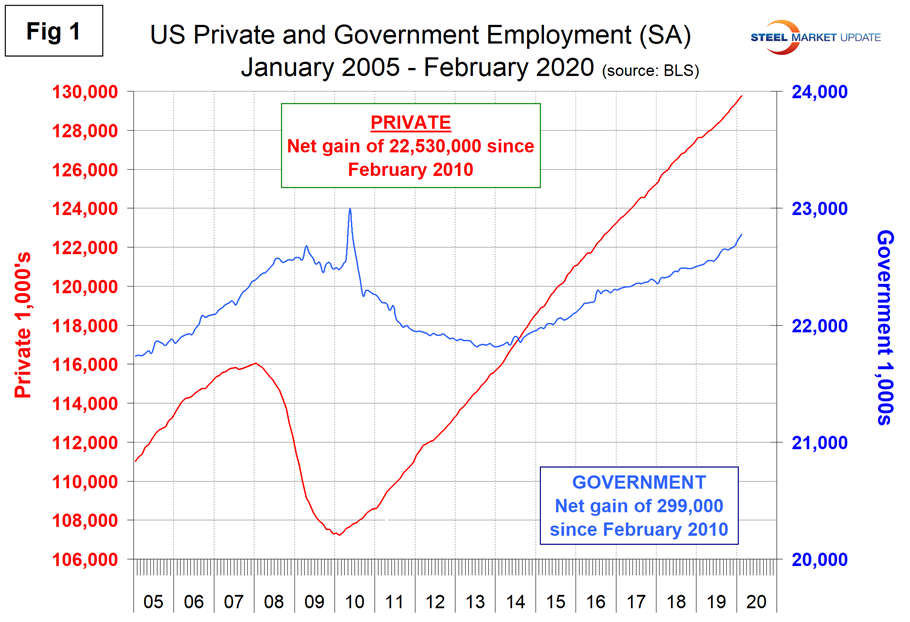
In February, service industries expanded by 212,000 as goods-producing industries, which are mainly involved in construction and manufacturing, gained 61,000 (Figure 2). Since February 2010, service industries have added 19,232,000 and goods-producing 3,597,000 positions. This has been a drag on wage growth since the recession as service industries on average pay less than goods-producing industries such as manufacturing. In the last 12 months on a percentage basis, the rate of job creation in service industries has been 50 percent higher than that of goods-producing industries.
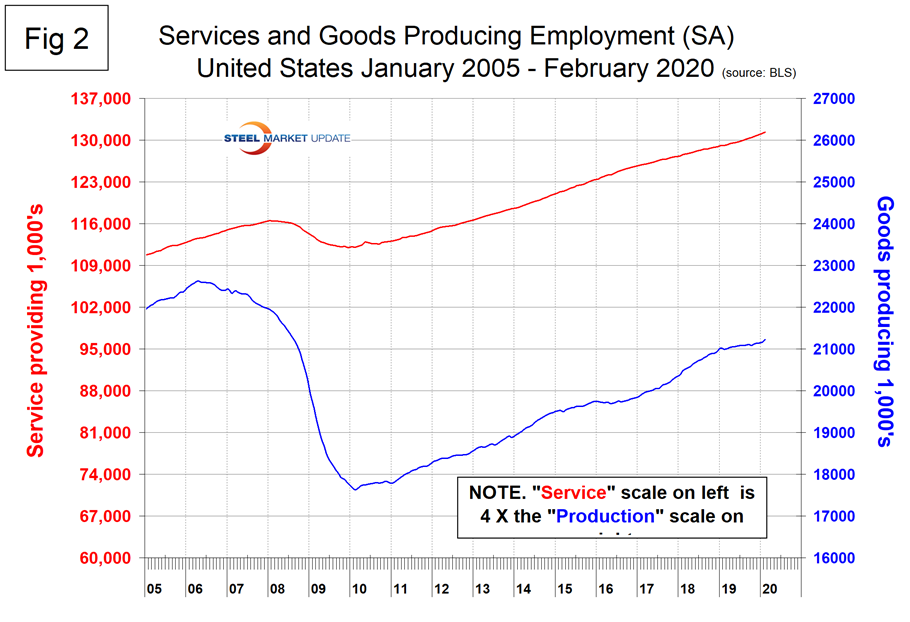
Construction was reported to have gained 42,000 jobs in February, and manufacturing 15,000 (on a seasonally adjusted basis). Since and including January 2018, construction has added 553,000 jobs and manufacturing 320,000. Figure 3 shows the history of construction and manufacturing employment since January 2005. In the last 24 months, construction has added jobs almost three times as fast as manufacturing. Construction has added 2,146,000 jobs and manufacturing 1,408,000 since the recessionary employment low point in February 2010. Manufacturing only gained 61,000 jobs in 2019 compared to 264,000 in 2018. This trend is in alignment with the manufacturing data that we present in a separate monthly report.
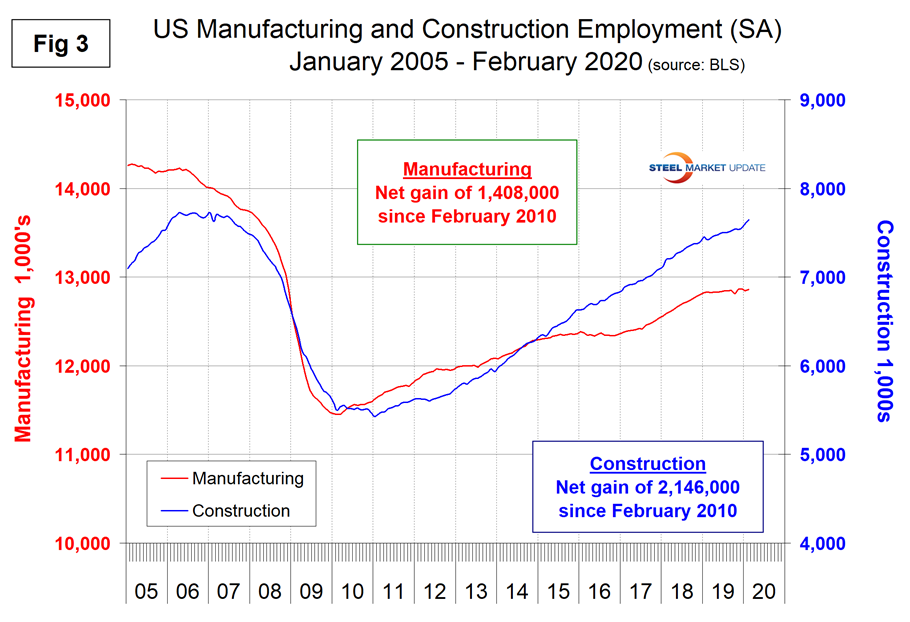
Note, the subcomponents of both manufacturing and construction shown in Table 1 don’t add up to the total because we have only included those with the most relevance to the steel industry.
Table 1 shows that primary metals lost 600 jobs in February and has seen employment declines in each of the last 11 months. Figure 4 shows the history of primary metals employment since January 2003. The primary metals industries lost 11,000 jobs in 2019.
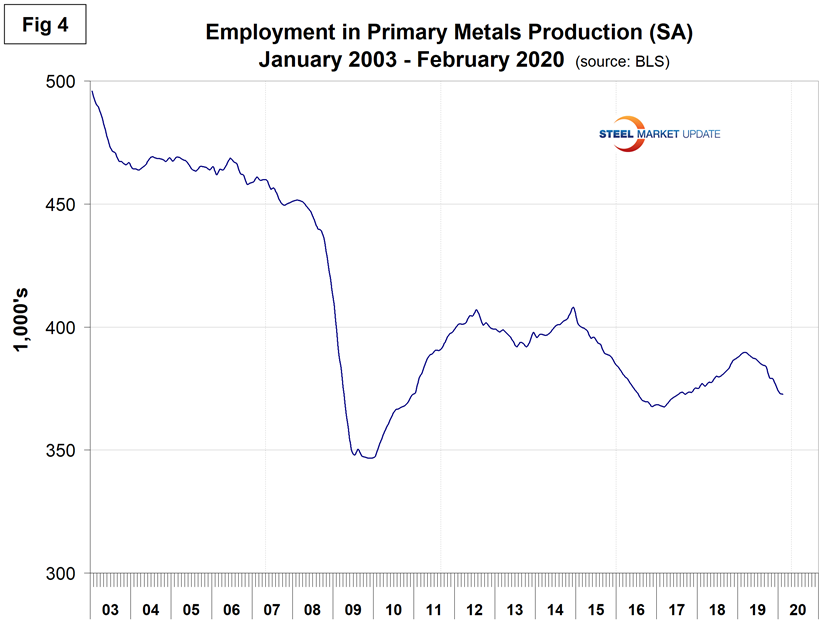
Motor vehicles and parts industries were reported to have gained 6,800 jobs in February and to have lost 13,000 jobs in the 12 months of 2019. Figure 5 shows the history of motor vehicles and parts job creation.
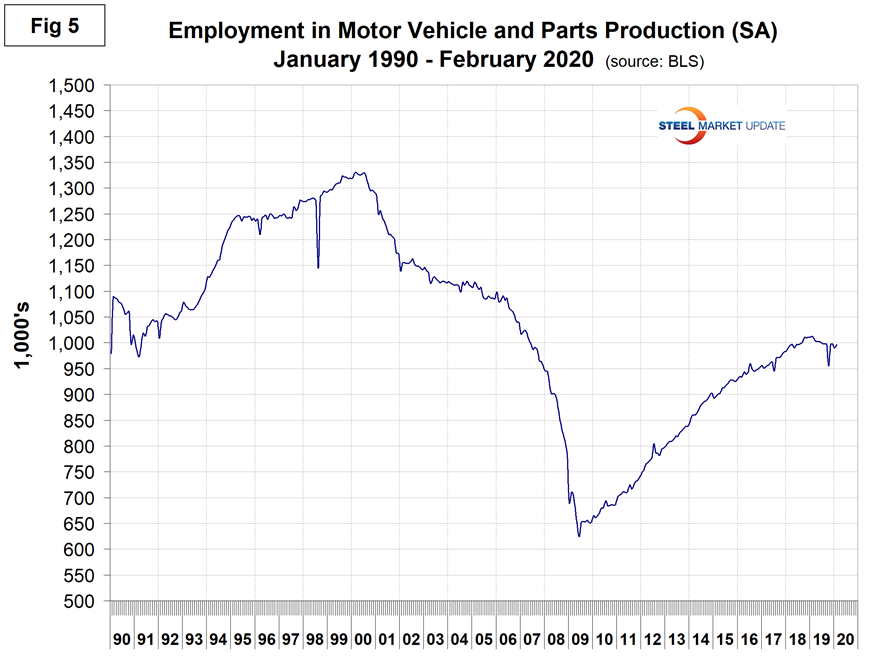
Trucking gained 1,700 jobs in February, but lost 8,900 jobs in the second half of 2019. We are particularly interested in this sector because employment in truck driving is one of SMU’s recession monitors and is obviously a fundamental measure of activity relevant to heavy industry.
Figure 6 shows that the decline that began in August last year has leveled off in 2020.
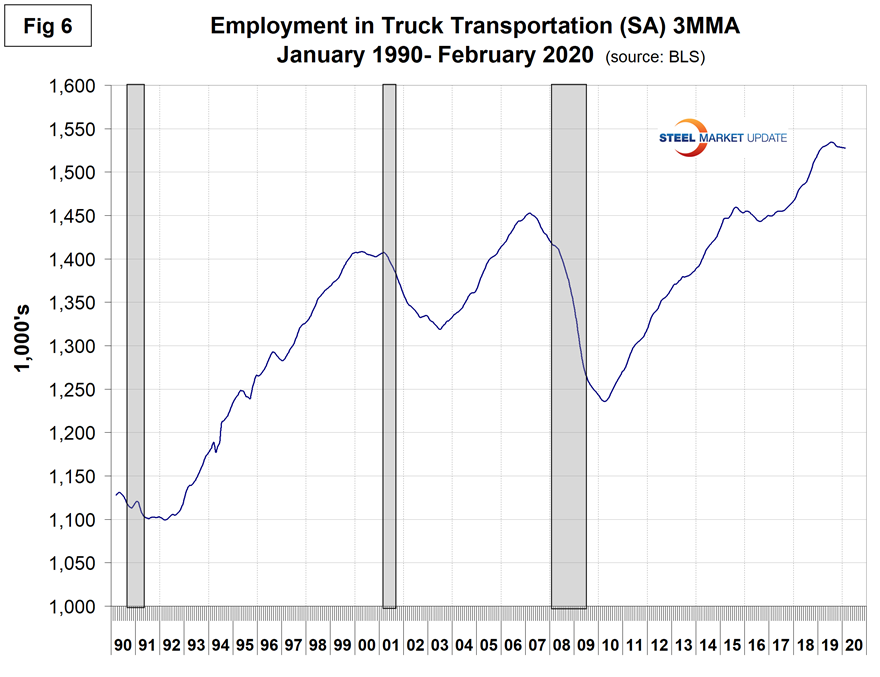
SMU Comment: There is no sign of a coronavirus effect in any of the details in the February employment report. Employment in manufacturing picked up in February after a disappointing January, and employment in construction is continuing to surge. Employment in the primary metals industries has fared much worse that overall manufacturing for the last two years and has declined for 11 straight months through February.
Explanation: On the first or second Friday of each month, the Bureau of Labor Statistics releases the employment data for the previous month. Data is available at www.bls.gov. The BLS employment database is a reality check for other economic data streams such as manufacturing and construction. It is easy to drill down into the BLS database to obtain employment data for many subsectors of the economy. The important point about all these data streams is the direction in which they are headed.

Peter Wright
Read more from Peter WrightLatest in Economy

Steel exports recovered in May but still historically low
US steel exports rose 10% from April to May but remained low compared to recent years. This came just one month after exports fell to the lowest level recorded in nearly five years.

AISI: Raw steel production ticks up near recent high
The volume of raw steel produced by US mills inched higher last week, according to the American Iron and Steel Institute (AISI). After steadily increasing in April and May, domestic mill output stabilized in early June and has remained historically strong since.

Steel groups welcome passage of budget bill
Steel trade groups praised the passage of the Big Beautiful Bill (BBB) in Congress on Thursday.

Industry groups praise Senate for passing tax and budget bill
The Steel Manufacturers Association and the American Iron and Steel Institute applauded the tax provisions included in the Senate's tax and budget reconciliation bill.

Chicago PMI dips 0.1 points in June
The Chicago Purchasing Managers Index (PMI) slipped 0.1 points to 40.4 points, in June.
